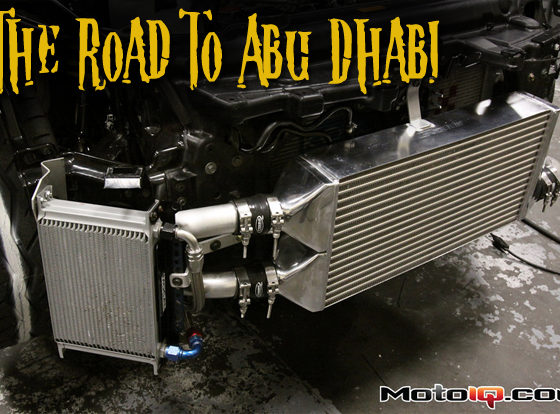,

It took most of a day to figure out that if you reached under the steering column, grabbed a certain wiring harness in just the right spot and gave it a squeeze, the car would start right up. At least for a while. Eventually even that little caress stopped working and we had to start the car by reaching under the hood and shorting the starter solenoid with an old scrap of speaker wire.
Each of these problems took precious hours–sometimes days–to figure out, so by the time we had nailed our 0-60 in 7 seconds goal and were ready to tackle the 70 mpg part, we had less than a week left.
There are two sides to improving fuel economy. You can make the engine more efficient, so it takes less fuel to make each horsepower, and you can make the car itself more efficient, so it takes less horsepower to make it move in the first place. We’ve already done everything we can to make our horses efficiently–our new TDI engine is incredibly frugal and the miraculous program we uploaded last week gained both power and fuel economy–now it’s time to tune the car.

 And that just about brings us here. El Mirage dry lake, Middle Of Nowhere, California. Over the past week we’ve been semi-blindly improving our Rabbit’s aerodynamics, hoping to make the barn-shaped Rabbit slip more smoothly through the air. We’ve smoothed out the nose with a front bumper from a mid-’90s Golf, slapped on the side skirts and fender flares from a late ’80s Volkswagen Cabriolet, installed smooth, flat wheels from an old Honda CR-X, built covers to completely hide the rear wheels from the air, covered the grille with aerodynamic cardboard (we were getting desperate), and made the entire underside of the car perfectly smooth with an undertray built from 1/4-inch plywood, sheet aluminum, and rubber floor mats.
And that just about brings us here. El Mirage dry lake, Middle Of Nowhere, California. Over the past week we’ve been semi-blindly improving our Rabbit’s aerodynamics, hoping to make the barn-shaped Rabbit slip more smoothly through the air. We’ve smoothed out the nose with a front bumper from a mid-’90s Golf, slapped on the side skirts and fender flares from a late ’80s Volkswagen Cabriolet, installed smooth, flat wheels from an old Honda CR-X, built covers to completely hide the rear wheels from the air, covered the grille with aerodynamic cardboard (we were getting desperate), and made the entire underside of the car perfectly smooth with an undertray built from 1/4-inch plywood, sheet aluminum, and rubber floor mats.We recruited the help of John McNulty, our friendly local aerodynamicist, to help with the modifications, but even to an aerodynamicist, air is a tricky thing. When we made the smooth underbelly, for example, John could tell us that the bottom of the car is the single biggest opportunity for reduced drag, and that for optimum effect, our smooth belly should be between 5 and 6 inches off the ground, and the back of it should angle upward at precisely 5 degrees. What he couldn’t tell us was if all that work was worth 1 mpg or 10.

The lakebed will tell us that. Miles of uninterrupted flatness in every direction is the best aerodynamic laboratory this side of a wind tunnel. On a calm day, we should be able to run back and forth across the lakebed measuring fuel economy without worrying about traffic, hills, or gusty winds. We can install our new aero bits one-by-one, test them all, and know exactly what we need to reach 70 mpg.
Unless, of course, it isn’t a calm day. Wind makes it impossible to gather aerodynamic data, and as our frantic week of fabrication dragged on, the storm forecast to hit the desert Saturday afternoon loomed larger and larger with every setback. By the time we had our aero bits finished, it was Friday night, and the storm was set to hit Saturday afternoon.



1 comment
Your town is an armpit to me, no SPEED week time trials no Adelanto grand prix no King of the Hammers racing, no racetracks no endless off road freedom. Just a bunch of self important media snobs who need experts to help them build a car. But maybe that’s why top gear America failed, some can see through the bullshit, and when you finally tried to do something real, it was too late. Buy the way, the wind DRIVES people mad out here in the middle of nowhere California, but its cheap enough to afford many cars to power slide at El mirage, and then rip up a mountain to the lake. British Top Gear came here as well, and it looked like an amazing crowd(they probably hated it). It’s funny how a maximum security prison and crazy local drivers can make a town intimidating to someone from a major metropolitan city.